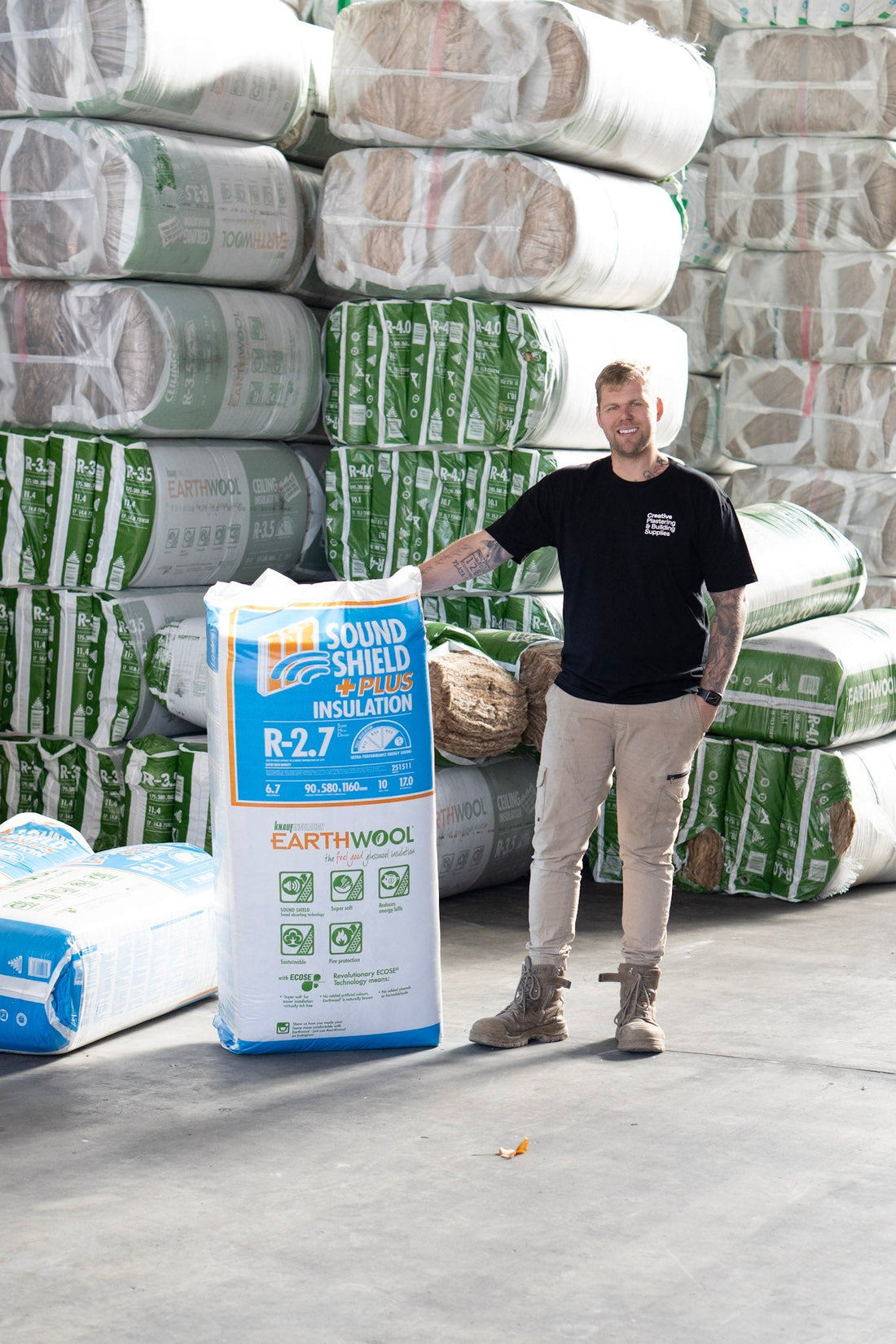
Insulation & Thermal Ratings in Australia (with Earthwool™)
Share
Getting insulation right isn’t just about comfort - it’s about meeting Australia’s building standards, cutting energy bills, and creating healthier homes. Here’s a clear, builder-friendly guide to how thermal ratings work under Australian Standards and the National Construction Code (NCC), plus how Earthwool™ products fit in.
The rules in a nutshell
-
What the NCC asks for: The NCC (2022) sets minimum thermal performance for building fabric - roofs/ceilings, walls, floors - so homes use less energy for heating and cooling. The details live in the Energy Efficiencyprovisions (e.g., Part 13.2 for housing; Section J for Class 2–9).
-
How products are tested & labelled: Insulation products must declare thermal performance (R-values) in line with AS/NZS 4859.1:2018 (amended 2024). This standard governs how R-values are measured and reported so you can compare apples with apples.
-
How to install bulk insulation: On site, installation should follow AS 3999:2015 - covering fit, gaps, compression, clearances, and safety around services and downlights. Correct install protects the R-value you paid for.
Quick tip: Compliance is about Total R-value of the whole construction (materials + air films), not just the batt R-value. The NCC provides the method; designers subtract the construction’s inherent R from the required Total R to work out the insulation you need.
Climate matters: choosing R-values by zone
Australia is split into eight climate zones in the NCC. A home in Albury-Wodonga or Sydney (temperate) has different heating/cooling loads to one in Cairns (tropical) or Ballarat (cool temperate). Always check your project’s official zone, then size insulation to meet or exceed the NCC target for that element.
-
Ceilings/Roofs: Often the biggest heat gain/loss path - prioritise higher R here.
-
External Walls: Aim for continuous coverage and minimise thermal breaks.
-
Floors: Elevated timber and slab-on-ground behave differently - assess per detail.
Many Australian homes (especially pre-2003 stock) are under-insulated. Upgrading ceilings and walls typically delivers the best bang-for-buck on comfort and bills.
Why Earthwool™?
Earthwool™ (by Knauf Insulation) is a glass mineral wool batt range that’s easy to work with and strong on sustainability and indoor comfort.
-
Low itch, easier handling: Earthwool’s softer feel makes installs faster and neater - great for tight schedules.
-
ECOSE® Technology: A plant-based binder with no added phenol or formaldehyde, no artificial dyes - lower embodied energy and low odour.
-
Reliable R-values: Products are tested and declared to AS/NZS 4859.1, so the label reflects real performance. (Always check the latest datasheet for thickness vs R.)
Common Earthwool™ applications
-
Ceiling batts: Widely used to reach higher targets in temperate/cool zones; available in popular R-values from ~R3.0 up to R6.0+ (thickness increases with R).
-
Wall batts: Standard stud sizes with thermal (and optional acoustic) performance; common selections include ~R2.0 - R2.7 depending on frame and target.
-
Mid-floor & acoustic batts: Control noise transfer while maintaining thermal performance.
(Refer to current product sheets for exact dimensions, densities and R-values.)
Getting NCC compliance right (and avoiding common fails)
-
Start with climate zone + construction detail. Confirm the project’s NCC climate zone and the relevant DTS/Performance pathway. Then determine required Total R-values for each element (roof/ceiling, wall, floor).
-
Select batt R-values to meet Total R. Consider roof colour, ventilation layers, reflective sarking, plasterboard, cavity air films, etc. they all add (or subtract) R.
-
Install to AS 3999. Avoid gaps, voids, compression and thermal bridges. Maintain clearances to downlights and services as per manufacturers and electrical rules. Document and verify. Keep product labels/datasheets on file showing compliance with AS/NZS 4859.1; record thickness and locations for sign-off.
Frequent mistakes to watch for
-
Gaps & compression: Even small gaps can slash performance - cut batts to fit snug around services.
-
Ignoring roof colour: Dark roofs can significantly increase cooling loads; pairing high-R ceiling batts with reflective sarking and lighter colours helps summer performance.
-
Mixing old and new stock without checking labels: Always check the declared R-value and compliance mark to AS/NZS 4859.1 (Amendment 1: 2024).
Example spec workflow (residential)
-
Confirm zone: Look up the site on the NCC Climate Zone Map.
-
Pick the pathway: Most detached homes use DTS (Deemed-to-Satisfy) housing provisions, or a NatHERS star rating pathway that drives envelope performance.
-
Ceiling first: Choose Earthwool™ ceiling batts to reach the roof/ceiling Total R target (e.g., pairing R4.0 - R6.0 batts with sarking and plasterboard to reach the number for your zone and roof build-up).
-
External walls: Select Earthwool™ wall batts (commonly ~R2.0 - R2.7) and plan for continuous coverage at junctions, around windows, and behind services.
-
Floors: If elevated, assess under-floor batts or perimeter insulation to meet the Total R requirement for floors in your zone.
-
Detail & install: Draw the insulation line on plans; install to AS 3999, maintain clearances, and photograph works before lining.
Sustainability & comfort benefits
Upgrading insulation can drastically reduce heating and cooling demand, particularly in older homes - improving comfort and lowering bills. Pairing quality ceiling and wall batts with good sealing and shading is one of the most cost-effective paths to resilient, heat-ready homes.
Earthwool™’s ECOSE® binder supports low embodied energy and better indoor experience (no added formaldehyde, no artificial dyes), aligning with modern sustainability specs without compromising performance.
Handy links (check your project)
-
NCC 2022 – Energy Efficiency (Housing): Building-fabric requirements & methods. National Construction Code
-
NCC Climate Zone Map: Confirm your official zone before specifying. National Construction Code
-
AS/NZS 4859.1:2018 (Amd 1:2024): How insulation R-values are tested/declared. i2iintertekinform.com
-
AS 3999:2015: Installation requirements for bulk insulation. store.accuristech.com
Ready to get the right insulation for your project?
Share your site details - climate zone, roof build-up, wall frame, and floor type - and we’ll match you with the perfect Earthwool™ insulation package. From ceilings and walls to acoustic and mid-floor solutions, we’ll make sure your build meets NCC compliance with products that are easy to install and built to perform.
